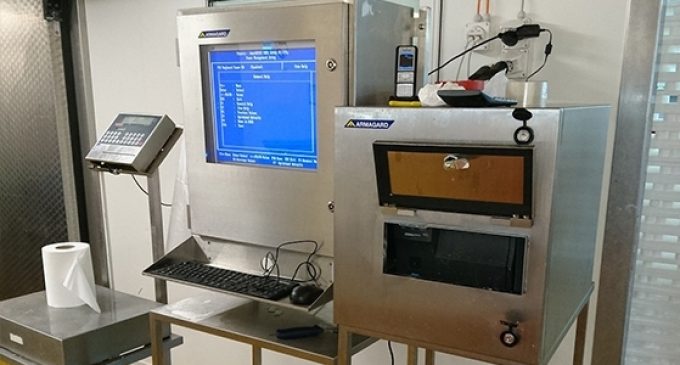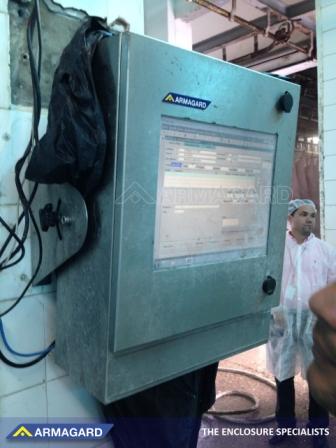How to Stop Food Manufacturing Contamination by Computer

Computers have become a key asset in food production processes. However, they represent a contamination risk in terms of gathering dust and food residue. This makes them a breeding ground for germs, which can quickly be transferred by food handlers, leading to widespread contamination across a facility. How can this be prevented?
Contamination is arguably the single biggest threat to any food manufacturing facility, which is why extreme measures are taken to ‘germ-proof’ the production line. However, some of the most common ways germs are spread include ‘hands to food’ or ‘food to hands to another food product’.
Should this occur on the food processing floor, not only have you got a full-blown contamination to deal with, which could lead to a complete shutdown in operations, you’re looking at huge financial losses in terms of food wastage, a standstill in production and idle staff. That’s not to mention a visit from your local health inspector!
Food Contamination by Computer
In an age where computers are being integrated more and more across facilities handling food, the transfer of germs from computer to food and vice-versa is a very real problem. Exposed computer systems and printers are a magnet for dust and in a food environment, where computers are used on a daily basis, there’s a high-risk of food residue accumulating.
Therefore, there’s a real need to stop the problem at the source. You could take computers apart to ensure that any dust or filth is cleaned out, but let’s face it, you’re not going to do that. You could implement a rigorous cleaning process that can be carried out every night, after hours, but chances are that won’t be well received.
You could move your computers to another part of your facility, where they’re likely to be less of a contamination risk, however, this hinders productivity.
Instead, you can opt to house critical computers in a food grade (316), stainless steel environmental enclosure. Why? They’re purpose-built to prevent contamination from computers in food environments. Encased in an enclosure, the computer is impervious to dust and food residue.
It cannot be emphasised enough that exposed computers on the food processing floor are a ready-made health hazard. By making computers a bacteria-free zone, you stand to prevent a complete shutdown of your facility caused by germ transfer from ‘unclean’ computers.
The added value of using computer enclosures in food manufacturing
Aside from preventing food contamination caused by the transference of germs from computer to food, the real value of adding computer enclosures to the food production floor is that they stop food debris and dust getting in. This prevents an accumulation of grease, grime and dust, which can do irreversible damage to computer systems.
If computers are the core of your food processing operation, the financial implications and the impact on your business reputation as a whole do not bear thinking about if a computer glitch brings your entire production process to a halt.
Essentially, computer enclosures are not a short-term fix, they bring long-term stability to your computer stations, not only preventing your computers from becoming a potential health hazard, but stopping them from ending up in the ‘computer graveyard.’
Follow up with Armagard
Armagard is a market leader in the design and manufacture of innovative environmental enclosures for industrial computers and printers. With more than 25 years of experience, we work with some of the largest companies in the food industry.
To learn more about computer enclosure protection for your food processing operation, visit www.armagard.com or call 1-866-434-0807.
The Author:
Head of Content at Armagard, Daniel has authored high-profile blogs on the latest topics and trends in industrial computing across the food manufacturing industry. Daniel’s content features on the Food & Drink Processing & Packaging website and the Food Processing website, offering thought leadership, commentary and insights on all things industrial computing in food manufacturing facilities.



































